History
-
Sri Madhwacharya

Among theistic schools, Madhvacharya occupies key position of repute with regard. The greatness of Madhva is well glorified in the Sumadhvavijaya of Narayana Pandit. His adorable glory is also narrated distinctly in Madhvavilasa, Sampradaya Paddhati, Vayustuti and others. Others include various Stotras, Padas, Suladis etc. All this narrative only and chief means to secure Lord's grace. Madhva is fair, impartial and just in this respect. He never imposes self- fabricated options and opinions on others. He fairly gathers prime import of all original Shastras with evidence and shows non contradictory theme and import of them through scholastic observation and just reconciliation. The commentaries and other treatises unveil the essence of Shastras that bear the validity of universally acceptable experience. This is the unique feature of Madhva's outstanding contribution. As Madhva gave an adorable way for sublime thought of inquiry into truth, he also blessed the world with noble code of observance (Sadachara). Madhva set up a separate Matha in Udupi and installed a Saligrama statue of Lord Krishna. He worshiped Lord Krishna for many years. Madhva also gave icons for daily worship to his pupils comprising Sanyasins and others. Thus, the way of sublime thought got appeared into the practice of noble observance. Madhva ordained some qualified souls into Samnyas- ashrama. They were Vishnutirtha, Padmanabhatirtha and others. He nominated eight celebrate monks and entrusted to them the worship of Lord Krishna and propagation of Siddhanta. He also made his pupils (Shishyas) as champions in propagating the doctrines of Dvaita system.
Sri Vishnutirtha

Vishnutirtha was younger brother and direct disciple of Madhva. He was foremost among all. Madhva happened to be an embodiment of rich knowledge where as his brother Vishnutirtha was well known as a unique treasure of Vairagya (detached attachment). It was nothing but the Vairagya got incarnated into tangible form of Vishnutirtha. Vishnutirtha served his parents devotedly in person. After the demise of parents, he approached Madhva residing in Vishnumangala for Chaturmasya and begged him for Samnyasashrama. Since it was the period of Chaturmasya, Vishnutirtha was not given Samnyasashrama there. He was asked to go back to Pajaka. Renouncing food and relaxation, Vishnutirtha awaited Madhva's arrival like Bharatfor Rama.
Sri Vyasatirtha

Sri Vyasatirtha was the direct disciple of Sri Vishnutirtha. He was an undaunted scholar and a great poet. He was famous in the line of sages. Vyasatirtha was an affectionate pupil like lovely child to Madhva and Vishnutirtha. He was worthy of enjoying the heart felt kindness and receiving the choicest blessings of Madhva. Vyasatirtha played an important role in Madhva's unique and outstanding game of intellectual and scholastic excellence with poetic skill. He was virtuous and lucky in worshipping the adorable icons of the hierarchy in glorious manner. The great scholar and poet Vyasatirtha might have authored some works, but none of his works is found till today. He entered the holy tomb in the year 1 327 A.D.
Sri Vedyatirtha

Receiving Samnyasashrama from Vyasatirtha, Vedyatirtha, being a great scholar, got engaged always in learning- teaching process of Shastras. Following the instructions of his Guru, he carried out the daily observance in a fruitful manner and worship on a grand scale. He travelled this holy land on sacred pilgrimage and delivered the good advice to the honest. Thus, he uplifted the qualified souls from mundane worries. He entered the holy Vrindavana in the year 1336 A.D. The period of his pontifical in charge of Vedanta empire was 9 years.
Sri Vedagarbhatirtha

Sri Vedagarbhatirtha was famous for knowing the secrecy of Mantras. In return of his good deeds he obtained the fulfilment (Siddhi). By virtue of that he, many times, saved the grieved from sufferings. He became famous and popular by putting the prescribed norms into practice with dedication. He entombed in the year 1 346 A.D in the holy Vrindavana. His period of pontifical in charge of Vedanta empire was 10 years.
Sri Vareshatirtha

Sri Vareshatirtha studied the 'Sarvamula' works of Madhva with utmost dedication. His command over many works was commendable. And because of this it was possible for him to deliver the lectures fluently on those great works. All works were learnt by heart. Hence, he succeeded in propagating the Siddhanta on firm footing. He travelled far and wide and conveyed the true import of Shastra to the pious mass. Sri Vareshatirtha breathed his last in the year 1354 A.D. His period of in charge was 8 years.
Sri Vamanatirtha

After getting initiated into Samnyasashrama, Sri Vamana- tirtha, with agreeable retinue, went on pilgrimage and paid visit to all holy centres. He had high regard and keen interest in Bhagavata purana and hence he was regularly giving speeches on that great work. Reciting the Bhagavata-shlokas with his sweet note, he could make the crowd of devotees to float into the stream of devotion. It is learntthat Vamanatirtha, although having not attained the old age, nominated his successor. He ended his mortal life in the year 1 362 AD. He was in charge of pontifical seat for 8 years.
Sri Vasudevatirtha

Continuing the rich tradition of worship and prescribed course of observance, Sri Vasudevatirtha used to teach and give thoughtful lectures on the Brahmasutrabhashya of Srimadhvacharya. He showed keen interest and devoted inclination towards that work as it has been regarded as a replica or an image of presence of Madhva. The whole text was in his tongue of memorisation. Major part of his life was spent in the holy presence of Lord Krishna at Udupi as he was not much interested in touring. He entered the holy tomb in the year 1 369 A.D. The period of pontifical in charge was 7 years.
Sri Vedavyasatirtha

Sri Vedavyasatirtha, being matchless scholar, was a great debater. He was always at forefront in debating with opponents. While refuting the tenets of opponents he could quote the statements spontaneously from their works. With the choicest blessings of SriHari-Vayu-Guru, Vedavyasatirtha excelled and shined in debates and discourses. He had the good deal of mastery in Shankarabhashya and other works also. The year of his Vrindavanapravesha was 1377 A.D. Vedavyasatirtha enjoyed the pontifical in charge of Vedanta Empire for 8 years.
Sri Varahatirtha

Sri Varahatirtha was direct disciple of Vedavyasatirtha. He was always getting engaged in the performance of Japa (muttering prayer) and Tapa (penance). Endowed with deep Yogic power, he preferred to have the pleasure of deep meditation like a great Yogin. He was liking to be in lonely place always. Varahatirtha was blessing the fruit of his Tapas to the faithful devotees. He nominated his successor to the hierarchy while he was middle aged and handed over him the responsibility. He entered the holy tomb in the year 1 386 A.D and his period of pontifical in charge was 9 years.
Sri Vedatmatirtha

During 14th century, Vedatmatirtha, the successor in the hierarchy of Sri Vishnutirtha was more popular. The tradition records that he was well versed in Veda and Vedangas. He was also a great poet. He might have contributed some works. But, otherthan 'Kavikarnamrutam 1 no other work in his name is available. The 'Kavikarnamrutam, is the commentary on 'Vayustuti' of Trivikrama Panditacharya. This commentary work brims with poetic talent and grammatical skill of Vedatmatirtha. It is learnt that Vedatmatirtha might have also written commentary on 'Nakhastuti' of Madhva. The work Kavikamamrutam' was published. Sri Vedatmatirtha entombed in the year 1398 A.D. His period of in charge of pontifical seat was 1 2 years.
Sri Vishwavandyatirtha - I

The Ashramanama as Vishwavandyatirtha was fruitful and agreeable in all respects. The personality of Swamiji was multi faceted. He was highly learned and well experienced in both i.e. Shastric fields and worldly affairs. He was the master of all lores and arts. Many a times, he took active part in scholarly debates and defeated the opponents through advanced arguments. At the time of debate and discourse he could make everyone stunned by giving stock and sample reply to the point immediately. Vishwavandyatirtha entered the holy Vrindavana in the year 1422 A.D. His period of pontifical in charge of Vedanta Empire was 24 years.
Sri Ratnagarbhatirtha

Sri Vishwavandyatirtha ord- ained a qualified student as his successor and named him Sri Ratnagarbhatirtha. Ratnagarbhatirtha studied Veda, Vedanga and Vedanta under his Guru and became a matchless scholar within a short period of time. He was an inestimable Yogin who received Lord's choicest blessings by worshipping and adoring Him through the means of supreme meditation. Living in naturally attractive, pleasing and secluded place Narala, near Ganjimatha in Mangalore Taluk, he did severe penance.
Sri Vedangatirtha

In the lineage of Vishnutirtha, Vedangatirtha happened to be a great author prior to Vadirajatirtha. He took Samnyasashrama from Vish- wavandyatirtha and studied Veda -Veda nga -Vedanta and other lores under his Guru and gained enormous knowledge in them. With this treasure he made his Ashrama name fruitful and rewarding. He fairly conti- o nued the unbroken conve- Sri Vedangatirtha dedication. Vedangatirtha authored some works that include commentaries, glosses and independent works. He devotedly engaged in learning -teaching of lores even when he was on pilgrimage. During his tenure, Matha excelled with towering fame and name. Sri Vedangatirtha entered the holy Vri- ndavana in the year 1441 A.D in Bilagi near Siddapur in Sirsi Taluk. The Vrindavana is situated on the bank of Soma river(Aghanashini). Later on adjoining to that Vrindavana, Sri Vadirajatirtha kept underground a set of all his works. On that, he installed the statues of Lord Vedavyasa, Hanuman and Garuda. In the last century, Sri Vishwottamatirtha carried out historical renovation of that spot. The sacred and secluded spot of Sannidhi does appear with pleasant scene of nature and confer the peace of mind. It pushes the qualified mass a step ahead to gain the rich experience of inner worth bliss.
Sri Vidyapatitirtha

Sri Vidyapatitirtha was an ardent disciple of Vedangatirtha. He was known best among pious and virtuous. He spent much of his life- period in Udupi. He used to recite and chant the rendering of holy texts even while walking. His Vrindavanapravesha was in the year 1449 A.D. He was in charge of pontifical empire for 8 years.
Sri Vishwavandyatirtha - II

Sri Vishwandyatirtha, being successor of Vidyapatitirtha, was endowed with unique power of Anima, Mahima, Garima etc. Being merciful and compassionate, he had great concern of saving the honest mass. He used to prescribe befitting remedial measures on spot. Sometimes, he roamed about lonely without any fear. Once at the time of Paryaya, he, with his mystic power, paralysed the attempts of his opponents. He entered the holy tomb in the year 1458 A.D. His period of pontifical in charge was 9 years.
Sri Vishwatirtha

Sri Vishwatirtha put into practice the prescribed norms of Parampara without any flaws. He dedicated his life to propagate the doctrines of Dvaita Siddhanta on war foot and then attained the holy feet of Lord. His Vrindavanapravesha was in the year 1 466 A.D. He was in charge of pontifical seat for 8 years.
Sri Vitthalatirtha

Sri Vitthalatirtha used to stay at Madhyavatamatha for longer time. He worshipped Lord Vedavyasa with pure devotion and dedication. He was very much pleased to receive the merciful blessings of the Lord. He entered the holy tomb in the year 1 473 A.D. He enjoyed the period of pontifical in charge for 7 years.
Sri Varadarajatirtha - I

ri Varadarajatirtha was eighteenth pontiff in the lineage of Sri Vishnutirtha. He went on sacred piligri- mage and visited the holy centres of this vast land many times. He renovated Kumbhasimatha at Kumbh- asi for the first time. He had the academic mastery over Bhagavadgita. And hence, he held scholarly debates power, Sri Varadarajatirtha blessed good oration to dumb speechless celibate. He also saved a Brahmin by name Narahari of Kumbhasi from dreadful disease cancer. He entombed in the year 1481 at Kumbhasi, Udupi Dist. The holy Vrindavana of Varadarajatirtha is situated by the side of Harihareshwara temple, Kumbhasi. He enjoyed the period of Pontifical in charge for 8 years.
Sri Vagishatirtha

Sri Vagishatirtha is the nineteenth pontiff in the succession of Vishnutirtha. He is well known as Ashramaguru of Sri Vadi- rajatirtha. His greatness and pre-eminence is noteworthy. Vagishatirtha was a saint- scholar having the experi- ence of vision of Lord through intuitive knowledge. He was at Kumbhasimatha engaging himself in Japa, Tapa, study of lores, teaching, worship etc.
Sri Vadirajatirtharu

Sri Vadirajatirtha happened to be the ever luminous crest jewel of the succession of Sri Vishnutirtha. Vadiraja was born on Magha Shukla Dwadashi of Sharvari Samvatsara (1481 A.D) by the grace of Vagishatirtha, the nineteenth in the hierarchy of Vishnutirtha. His parents were Sri Ramacharya and Gouri. His birth name was spelled as Varaha as he was born with the blessings of Lord Varaha, favourite and presiding deity (idol) given by Madhva to Vishnutirtha. As destined by destiny, Vadiraja's birth took place outside the residence. The essential Samskaras such as Jatakarma, Namakarana etc. were performed on time.
Sri Vedavedyatirtha : (1530 - 1616)

Sri Vedavedyatirtha was the direct disciple of Sri Vadiraja. Vadiraja gave Samnyasashrama to a qualified candidate and named him as Sri Vedavedyatirtha (1540). Vedavedyatirtha studied under his Guru and became a great scholar. He faithfully doing Japa, Tapa, studying lores, worship etc. Sri Vedavedyatirtha per- formed two biennial Par- yayas. The period of his first biennial Paryaya was 1596- 97 (Udupi). And it was the period of fifth Paryaya of Vadiraja (Sode). Vedavedya used to say that he had the experience of holy and em- bodied presence of Vadiraja and hence it was Vadiraja's fifth Paryaya.
Sri Vidyanidhitirtha

Sri Vidyanidhitirtha took Samnyasashrama from Vedavedyatirtha in the year 1585 A.D. He studied under Vadiraja. Vidyanidhi was a right hand to Vedavedya and rendered assistance in his first Paryaya (1 596-97). He was a good orator. Once, at the time of studying, Vidyanidhitirtha asked one irrelevant question to Vadiraja. Vadiraja was not happy with that question and hence stopped the teaching (Patha). He told Vidyanidhi about the short span of his life and suggested him to go on holy pilgrimage. Accordingly, Vidyanidhi went on short pilgrimage and returned to Kumbhasimatha. There only, he entombed in the year 1 598. The period of Samnmyasa- sharama of Sri Vidyanidhi was 1 3 years. Hence, we do not find any reference of Vidyanidhi at the time of Vadiraja's Vrindavanapra- vesha.
Sri Vedanidhitirtha
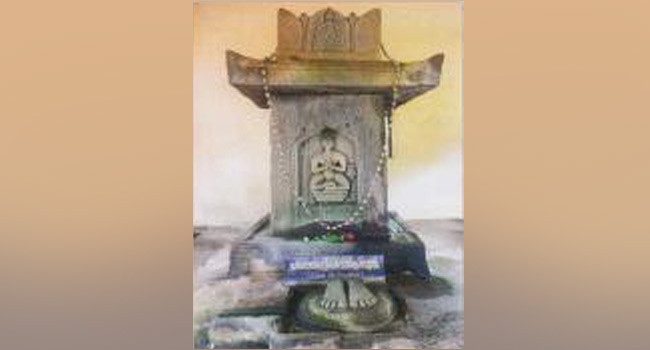
Sri Vedanidhitirtha, gene- rally known as Prashishya of Vadiraja, took Samnyasa- shrama from Vidyanidhi- tirtha in the year 1593. He continued the unbroken practice of Japa, Tapa, study of lores, worship etc, with dedication. Being assistant, Vedanidhitirtha served Vadiraja during fifth Paryaya at Sode. Once, when Vadiraja was on tour, he expressed his intension for oil bath. The king Arasappanayaka casually questioned. But he was put confined. Swamiji got fulfilled his desire. After returning, Vadiraja came to know the fact and instructed Vedanidhitirtha to undergo the act of expiation because both the things were not agreeable to Samnyasins. Accordingly, a small pond was erected and it was filled in with cow dung and cow's urine. Vedanidhitirtha used stay there for few hours daily for 48 days. By this act, he became purified. Vedanidhitirtha was fortunate enough to have the visible sight of Vrindavana- pravesha of Vadiraja. Then after sometime, at the heart felt appeal of Vedanidhitirtha, Vadiraja showed his beautiful form abiding in Mulavrindavana to Vedanidhitirtha, Lakshmipati and others.
Sri Varadarajatirtha - II
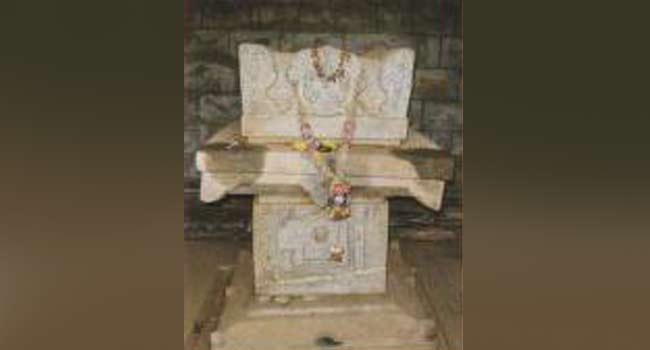
Sri Varadarajatirtha was ordained into Samnyasashrama by Sri Vedanidhitirtha. By doing devoted service at the holy presence of Sri Vadiraja, he was graced with blessing favour of Vadiraja. He did his biennial Paryaya at Udupi during the period of 1660-61. He lived in Tirthahalli Matha for more time. Doing Patha-Pravachana regularly in his Matha, Tirthahalli, Varadarajatirhta entered the holy Vrindavana in the year 1 673. The period of pontifical in charge was 25 years.
Sri Vishwadhirajatirtha
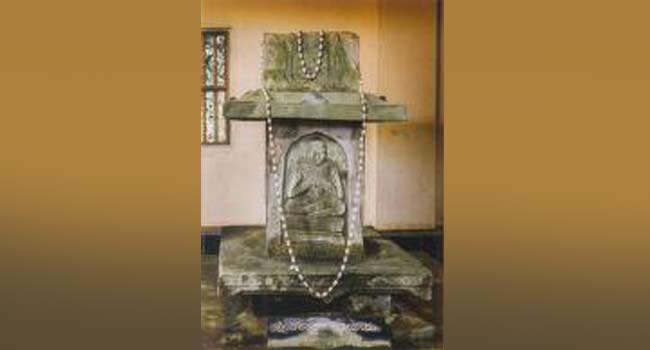
Sri Vishwadhirajatirtha preferred to stay at Sode and offered devoted service at the feet of Vadiraja. Engaging regu- larly in moral duty of Patha- Pravachana and religious rights, he did Siddhan- taseva with right spirit. Like his Guru, Vishwadhiraja- tirtha did his biennial Paryaya at Udupi in the year 1676-1677. During that Paryaya period, he taught 'Sarva-mula 1 and others works to his pupils. He organised a scholarly meeting of learned and defeated the opponents in debate. He entombed at Sode in the year 1 688. His holy Vrindavana is by the side of Mruttikavrindavana of Sri Vrindavanacharya. Sri Vishwadhirajatirtha enjoyed the period of in charge of pontifical empire for 1 5 years.
Sri Vadivandyatirtha

Sri Vadivandyatirtha was well recognised as distinguished scholar. He taught Nyaya- sudha and other major Vedantic works many times. The tradition records that Vadivandyatirtha organised scholarly discourse and debate at Paryaya period in Udupi and vindicated the Siddhanta stand point on solid grounds. He defeated Shamashastry, a staunch Shaivadvaita scholar on Mithyatva concept in debate. Some works written by Sri Vadivandyatirtha are available. Mention may be made about Sri Vadirajastuti, Sri Vadirajashtaka, Jayastotra and Vadirajadhyanaprakara. He might have written few more works but that are unfound. He did his Paryaya in the year 1 692-93. He entombed in the year 1 706. The holy Vrindavana of Sri Vadivandyatirtha is at Sode besides the Vrindavana of Sri Vedanidhitirtha. The period of pontifical in charge was 1 8 years.
Sri Vishwavandyatirtha - III

Sri Vishwavandyatirtha enriched the Guru-parampara by observing the prescribed deeds of Samnyasashrama. Getting nvolved in Shastric studies, he earned good command on Sarvamula works and works of Vadiraja. It is well known fact that Vishwavandyatirtha did Patha-Pravachana-Parayana of Yuktimallika at the gracious Vrindavana Sannidhi of Vadiraja many times. Once, a north Indian scholar, on his pilgrimage, came to Sode and seeing the matchless mastery of . shwavandyatirtha over several Shastric works, got stunned. Vishwavandyatirtha was lucky enough to have good deal of command over Poorvamimamsa and Vya- karana. Sri Vishwottama- tirtha used to say that Sri Vishwavandyatirtharu wrote a rare work on Mimamsa by name Bhattabodhini. His Paryaya period was 1708- 1709.
Sri Vibudhavaryatirtha
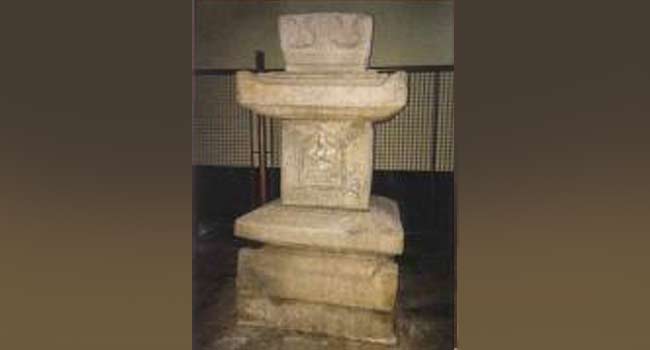
Sri Vibudhavaryatirtha was disciple of Sri Vishwavandyatirtha. He was a great scholar and saint of high rank. He engaged always in teaching the Shastric works like Nyayasudha, Yuktimallika etc. He has composed a great Mahakavya namely Subhadraharana. He has written Shloka formed commentary on Vishnusahasranama and also a gloss on that. This commentary is rare of its kind. He gained a very good deal of mastery over different lores, including Vedanta by the gracious blessings of Madhva and Vadiraja. He used to teach major works to some pontiffs and other scholars of that time. Might be in travel or not, he used to make Parayana of 'Sarvamula' and other works regularly. He undertook the renovation of Vadiraja Matha at Sode for the first time and completed that. The tradition records an unique incident that happened in the life of Sri Vibudhavaryatirtha. And that confirms the seer's super power of favoring and castigating.
Sri Vishwanidhitirtha
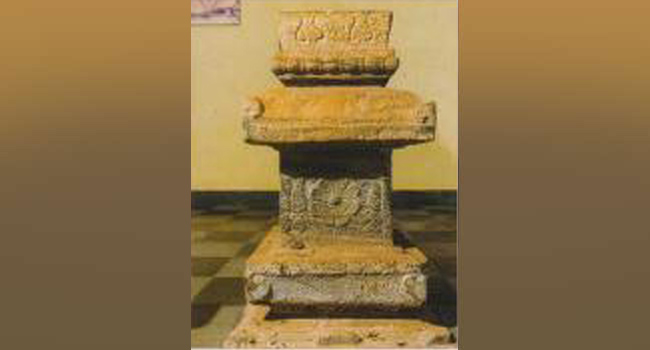
Sri Vishwanidhitirtha was the direct disciple of SriVibudhavaryatirtha. Swamiji was the twenty-ninth pontiff in the lineage. He travelled extensively in southern India and propagated the Dvaita Siddhanta. In his middle age, he nominated his successor (his younger brother) and named nim Sri Vishwadhishwaratirtha. Sri Vishwanidhitirtha enjoyed good command on Bhagavata and Nyayasudha. Without the nelp of text (book) he could recite and teach his disciple and others. He had deep concern over his disciple's studies. He wanted his successor be a master scholar. Therefore, even while travelling, he used to have the company of his Shishya and teach him regularly. Swamiji delivered year long discourse on Bhagavata during his Paryaya period. Debating on the concept Bhakti, he defeated a Shrivaishnava scholar namely Sridhara sharma in debate. Because of the unique Mahima of Guru Vishwanidhitirtha, Matha entertained the receipt of many gifts from royal families and others. He did Paryaya during 1 740-41 . Swamiji entered the holy Vrindavana in the year 1753 A.D. His Vrindavana is situated in Undaru (Innanje) village in Udupi Tq. and Dist. His pontifical period of Vedanta empire was 1 4 years.
Sri Vishweshatirtha

Sri Vishweshatirtha was the thirty first pontiff as successor in the lineage of Sri Vishnutirtha. When he was ordained into Samnyasashrama, his guru came to know that his disciple was not so intelligent and wise as expected. Because, Vishweshatirtha was not reacting and responding skilfully after teaching. Guru was unhappy and became indifferent towards his Shishya Vishweshatirtha. Shishya felt very bad and made-up his mind to find an agreeable solution. He left Matha and roamed about for some days. He came to a secluded and remote place.
Sri Vishwapriyatirtha (Srimadvrindavanacharya) - 1774-1865

Sri Vishwapriyatirtha was a Shakapurusha and great mystic divine being of nineteenth century. He was born in the year 1 774 in Inna village near Udupi. He was the son of Krishnacharya (Nagashayana) eldest brother of Vitthalacharya (Vipraguru-Vishweshatirtha). His name was Srinivasa. After undergoing the rites of refinement such as Jatakarma, Nama- karana, Chowla, Upa- nayana etc., he was ordained into Samnya- sashrama at the running age of ten by Guru Vishwesha- tirtha and named as Vishwa- priyatirtha. He did his basic Shastradhyayana under his aged Paramaguru Sri Vish- $ ri Vishwapriyatirtha wadhishwaratirtha. When he (Moo i avrindavana)> udupi made up his mind to go elsewhere for higher studies then, in dream Vadiraja hinted at him to come to his abode (Sode). Sri Vishwapriyatirtha went to Sode and engaged in devoted service (Seva) at the holy Panchavrindavanasannidhi of Sri Vadiraja. He also did rigorous penance by taking only a fistful fried rice mixed with curds at the end of evening worship daily.
Sri Vishwadhishatirtha
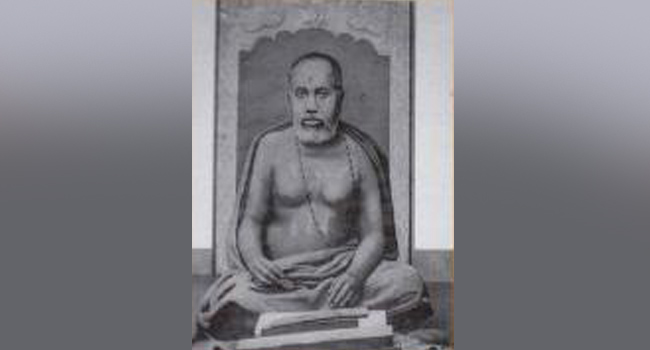
Sri Vishwadhishatirtha was a direct disciple of Vrindavan- acharya. Graced with tall and stout personality, Swamiji was generally known and addressed as 'Hiriya Swamigalu 1 (senior Swamiji). He had the good deal of impression of past life. By virtue of that he was blessed with abundant knowledge. He studied under great and matchless scholar Sri Vidyadhishatirtha of Krishnapur matha. In addition to this, to please and propitiate his Guru Vrindavanacharya he did regular recitation of Samgraha Ramayana of Narayana pundit for a period of one Mandala at the holy presence of Mukhyaprana in Udupi. By the gracious favour of Mukhyaprana, Swamiji gained enormous knowledge and became undaunted scholar-debater par excellence.
Sri Vishwendratirtha

Sri Vishwendratirtha was born in 1881. At the time of Samnyasashrama, he was 16 years old. He continued his Shastric studies under Sri Vibudhapriyatirtha of Adamar Matha. He was highly qualified in Veda-Vedanta fields. As Swamiji was a great scholar in Shastric field he was equally talented in the field of literature. He has composed many poems in Kannada. The style is embellished with literary touch. The narra-tion in composition brims with clarity. The pen name of Swamiji is 'Rajesh- Rajanath'. Sri Vish- wendratirtha has also composed a small Sanskrit work namely Sri Vadirajashtaka. It is in the form of praise and prayer glorifying the main incidents of Vadiraja's life.
Sri Vishwottamatirtha (1934-2007)
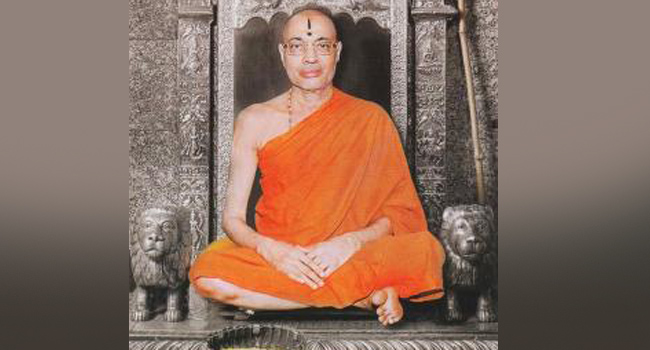
Sri Vishwottamatirtha, who flourished in the 20th century was a saint pontiff of crown personality. He was stock sample of rare combination of discipline of Samnyasashrama and deep Shastric knowledge. He was always peaceful and calm. He used to deal with things with serene approach and sensible attempt. He used to prefer to have secluded place for deep deliberation of learning.
Sri Vishwavallabhatirtha
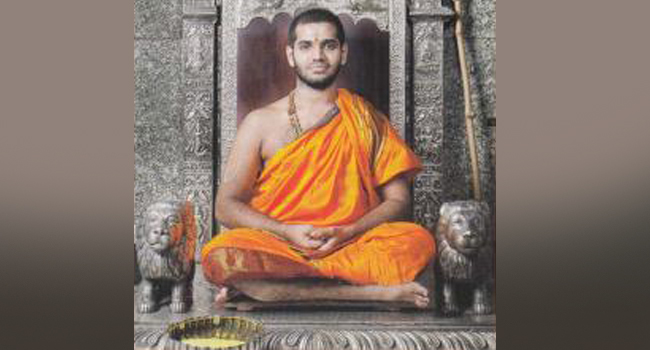
Sri Vishwavallabhatirtha was born of honest and virtuous couple Srinivasa Tantri and Smt. Vedavati in Padigaru near Udupi on 24-03-1991. Undergoing the prescribed rites of refinement such as Jatakarma, Namakarana and others, he got the name Raghava . As he was born on Ramajayanthi, the name 'Raghava was agreeable in all respects. Even in childhood, Raghava preferred to have Ekanta. He grew as lovely child of mother. Raghava used to assist his mother in homely affairs. Raghava's grandfather was Vidwan Sri Gururaj Tantri. He was a great scholar, knower of rich tradition and an authority in Dharmashastra (code of laws). As he was strictly adhered to the observance of Ekadashi, he was well known as Ekadashi Tantri. As he was endowed with the power of Mantra, he, at the birth of Raghava, predicted and pre told that born child would become glorious and achieve something extra-ordinary. The style of Raghava's life was a sample of discipline. In his responsible life, timely awareness and proper endeavor are reciprocally intact and promising in achieving the goal.



